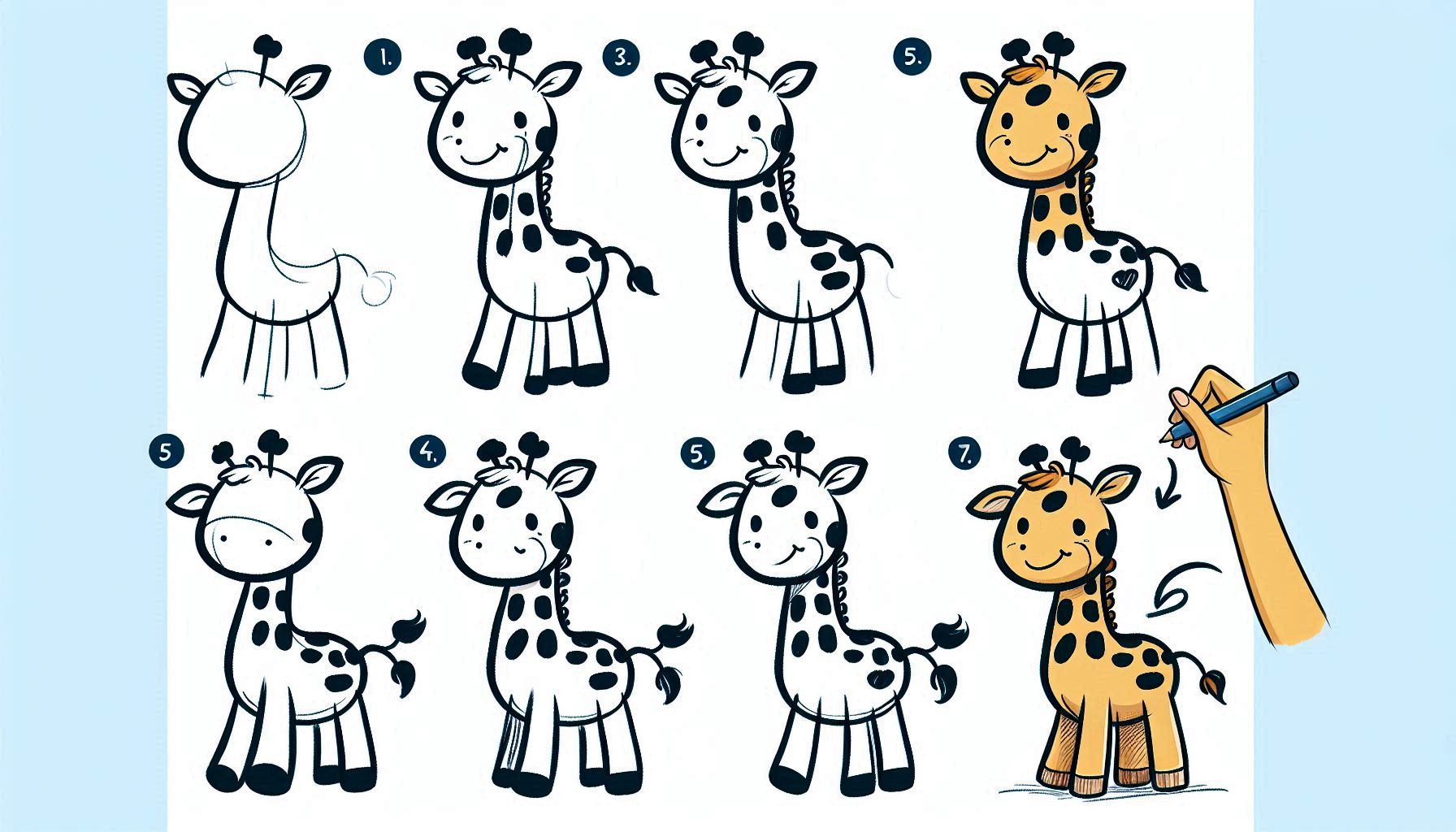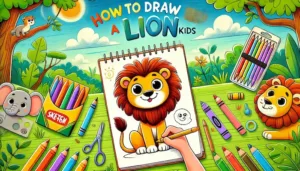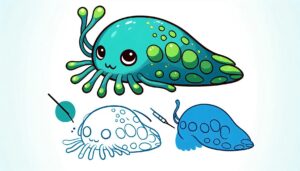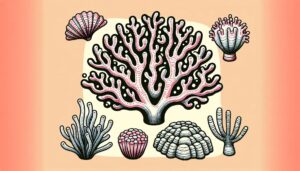How to draw Giraffe, Creating a giraffe drawing is a delightful and imaginative journey as these majestic animals possess extraordinary characteristics. Giraffes are incredible creatures to capture on paper, with their elegant legs, unique spots, and long necks. Let’s explore the process of drawing a giraffe step-by-step and create a stunning masterpiece. Get ready with your pencil, it’s time to begin!
Table of Contents
The Delight of Sketching Elongated Neck Forms
Giraffes are well-known for their impressively long necks, making them a fascinating subject to sketch. Understanding how to capture this unique characteristic helps you create a giraffe that exudes grace and grandeur.
The Joy of Incorporating Spot Patterns
Giraffes display stunning, asymmetrical patterns across their bodies. Incorporating these spots into your drawing can be an enjoyable method to enhance texture and add intricate details, resulting in a more lifelike and captivating depiction of your giraffe.
The Joy of Capturing Elegantly Moving Limbs
Giraffes possess long, graceful legs that enhance their elegant demeanor. Creating artwork of these limbs can be an enjoyable endeavor as you hone your skills in capturing their elegant and elongated shape.
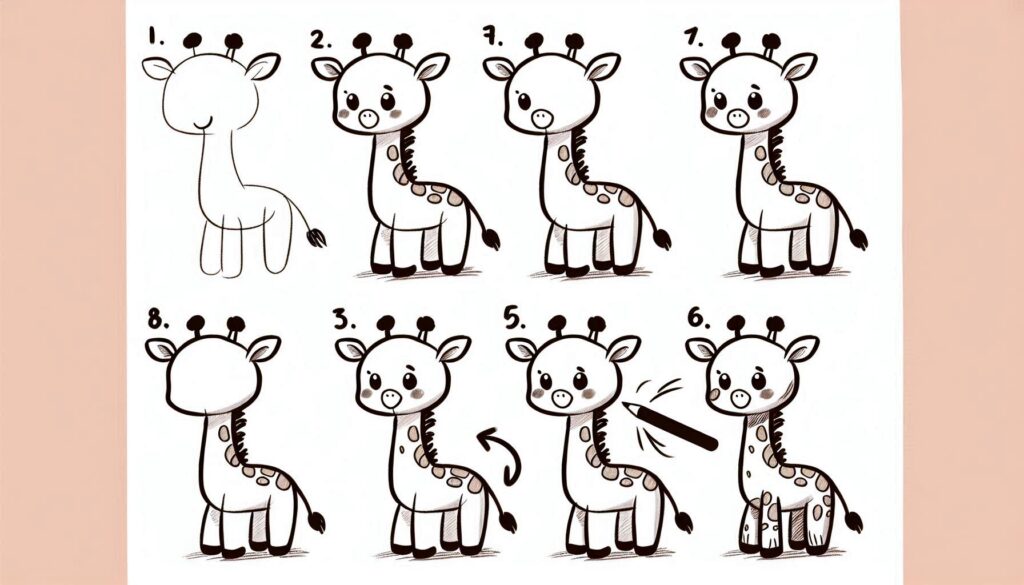
Steps: How to draw Giraffe
Step 1:
First, begin by sketching the giraffe’s head. Begin by sketching a petite oval or gently curved rectangle at the uppermost part of your paper. Place two small, rounded shapes on top of the head which are horn-like structures found on giraffes.
Step 2:
Now let’s add the long neck. Extend two curved lines downward from the head to form the neck. The neck should have a long and elegant shape, gently tapering as it descends.
Step 3:
Now, let’s add the body of the giraffe. Create a sizable, elongated or rectangular shape that is attached to the lower part of the neck. The body should have a slightly wider top and a narrower bottom.
Step 4:
Now let’s add the legs. Begin by sketching four elongated, slim legs that protrude from the body. It’s important to ensure that each leg is wider at the top and gradually narrows towards the hooves. Include curved lines at the bottom of each leg to show the hooves.
Step 5:
Draw the giraffe’s facial features. Create two big, circular eyes on the head, and include a small, curved line for the mouth. You can also incorporate a small nose and add some delicate details to the ears.
Step 6:
Now it’s time to add the spots to the giraffe. Create organic, curvaceous forms across the body and neck. The spots could have different sizes and shapes to imitate the natural pattern of a giraffe’s coat.
Step 7:
Now let’s add the finishing touch by drawing the giraffe’s tail. Draw a slender, curved line extending from the back of the body and include a small tuft of hair at the end. The tail should be elongated and slim.
Step 8:
Enhance your drawing by outlining it with a darker pencil or pen, which will make the lines more prominent. Remove any extra guide lines and perfect the details to give your giraffe a neat and polished appearance.
Step 9:
Add some color to your giraffe! Consider using shades of yellow and brown to create a visually appealing body with spots. Consider incorporating lighter shades to bring out the giraffe’s features and add depth.
Theme 1: Exploring the Delight of Creating Long Neck Shapes through Drawing
Hooray! Let’s discuss the delight of creating elongated neck shapes! Giraffes are well-known for their impressive necks, which give them a distinct and regal appearance. By paying attention to this elongated and sophisticated characteristic, you can capture the elegance and impressive stature of the giraffe. It’s fascinating to witness the unique form of this creature as it transforms into a magnificent giraffe!
Theme 2: Embracing the Joy of Incorporating Spot Patterns
Hello there! Let’s discover the joy of incorporating spot patterns! Giraffes possess stunning, asymmetrical spots that lend their coats a unique texture. Adding these spots enhances the level of detail and realism in your giraffe. It’s all about crafting a genuine and captivating pattern that brings your giraffe to life!
Theme 3: The Joy of Capturing Elegance in Motion
Let’s explore the thrill of capturing elegant movements! Giraffes possess long, slender legs that enhance their graceful appearance. Practicing drawing these legs can help you capture the height and grace of the giraffe. It’s an enjoyable method to give your giraffe the appearance of walking gracefully across the savannah!
Conclusion
Creating a giraffe illustration can be an enjoyable and beneficial exercise for honing your skills in capturing the elegant shape of a long neck, the intricate patterns of spots, and the graceful structure of the legs. By following these steps and adding your own creative touches, you’ll create a wonderful drawing of a giraffe. Keep in mind that with practice, your drawing skills will improve and you’ll be able to create realistic animals. So grab your pencil, have a blast, and create a giraffe that exudes charm and elegance!
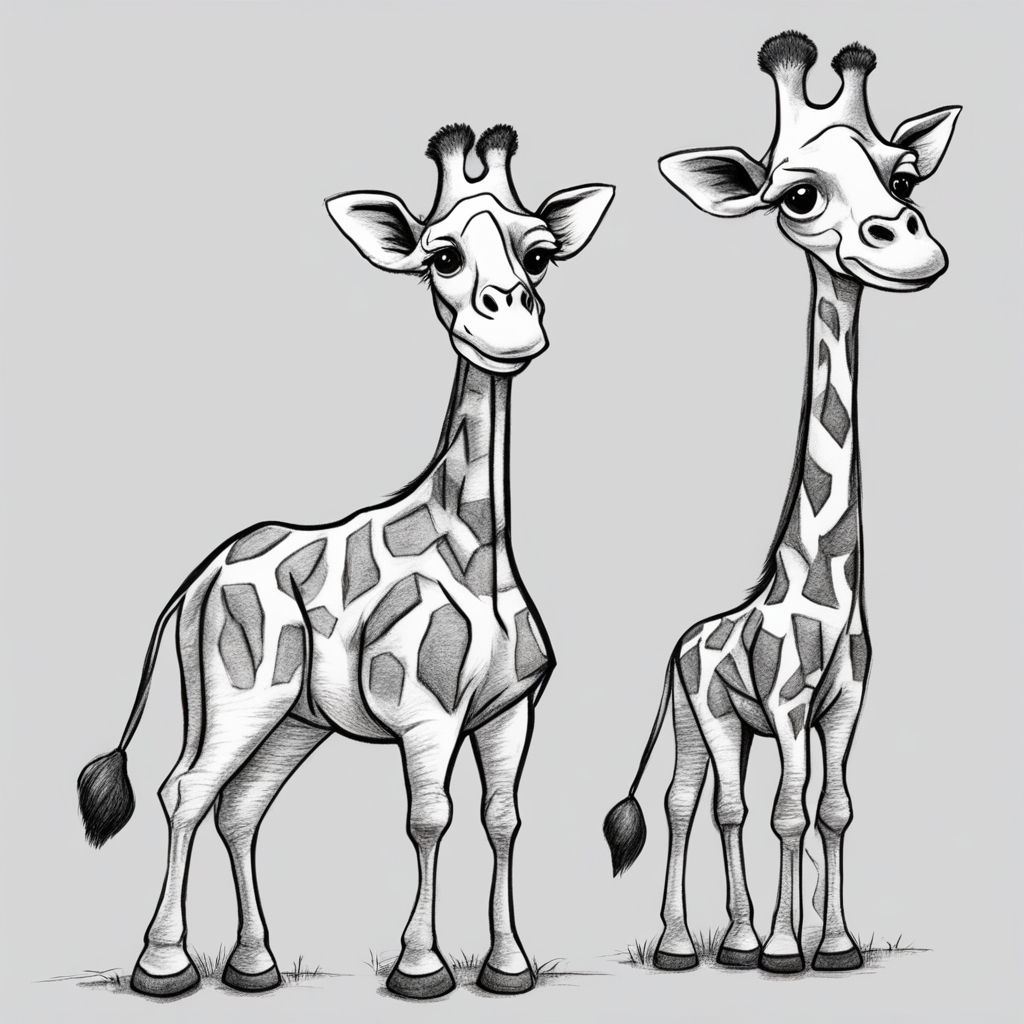
Check out this super fun and simple guide on how to draw a bat with easy step-by-step instructions! This fun tutorial offers easy-to-follow steps, ensuring that young creators can dive into their imagination while discovering fascinating creatures!

